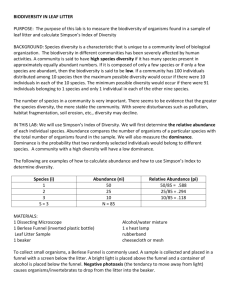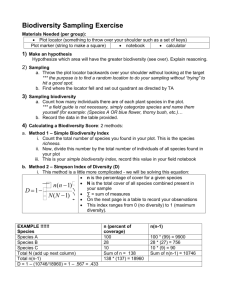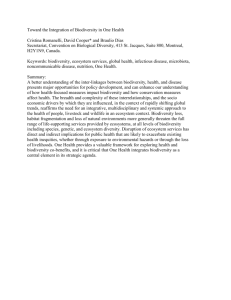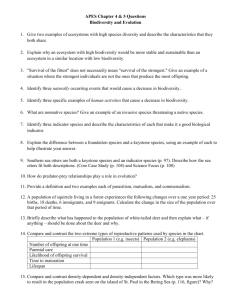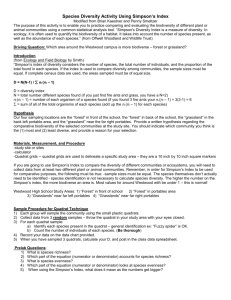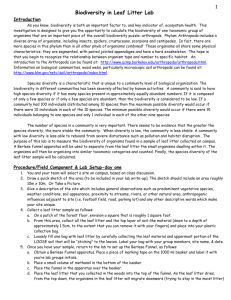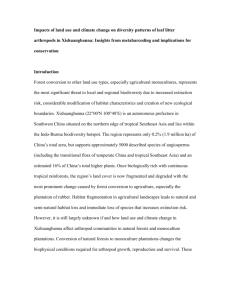Leaf Litter Biodiversity Example Student Partners: Student 1, Student
advertisement
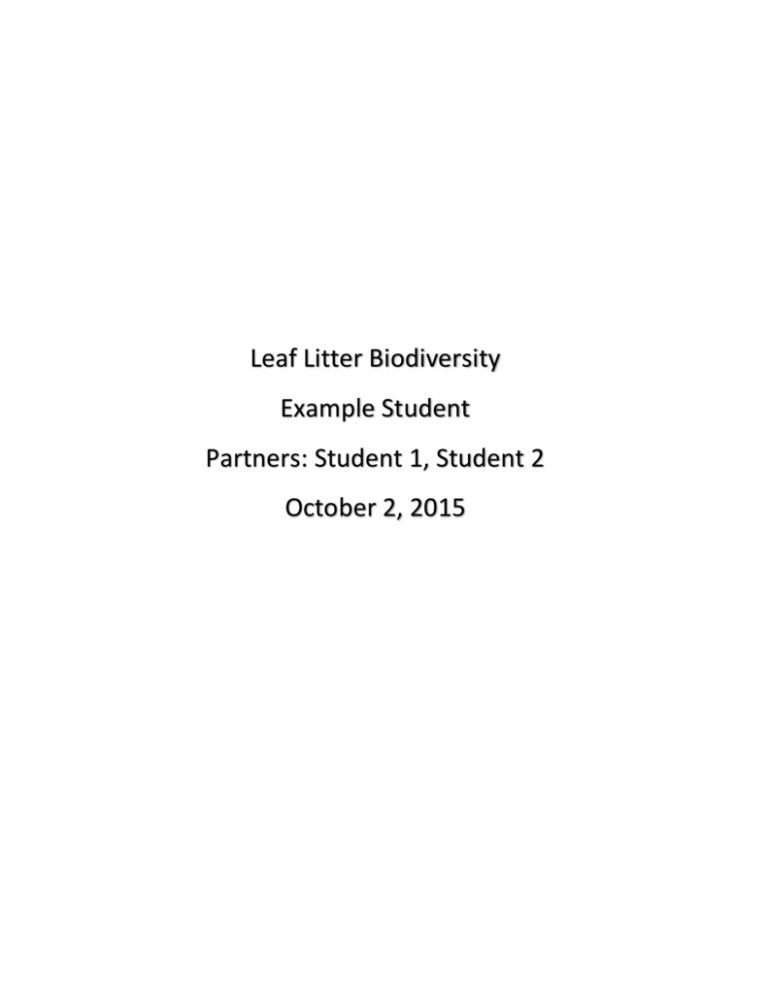
Leaf Litter Biodiversity Example Student Partners: Student 1, Student 2 October 2, 2015 Abstract In order to determine the biodiversity of invertebrate species in a local forest ecosystem, samples of leaf litter were obtained and analyzed. A Simpson’s Index was calculated for the individual and class samples. It was found that the local forest ecosystem had a biodiversity index of __________________. This indicates that the biodiversity of the ecosystem was (low, mid-range, high). Materials 2-L bottle dropper pipette Ring stand with ring clamp large petri dish Cup invertebrate identification key Alcohol heat lamp Stereoscope Procedure 1) Cut a 2-L bottle in half. Save both halves. 2) Collect leaf litter using the 2-L bottle halves. The bottom part can be used as a scoop. Scoop leaf litter into the top half of the bottle going from the surface to the soil. 3) 4) 5) 6) 7) Data Table 1: Group Data Species Number of Individuals (n) Totals (N) Table 2: Class Data Species Number of Individuals (n) Totals (N) Data Analysis(Calculations) The Simpson’s Index was calculated for both the group data & the class data. Group Simpson’s Index: ∑ n(n-1) ÷ N(N-1) [use this space to show the math work] Biodiversity Index= 1- = _______ Class Simpson’s Index: ∑ n(n-1) ÷ N(N-1) [use this space to show the math work] Biodiversity index= 1- = _______ Discussion [explain & discuss the results here….see the format sheet for specifics] Error Analysis An accepted value for the biodiversity index does not exist; therefore, a percent error cannot be calculated. However, there is error in your data [no such thing as perfect data] so describe how the error could be reduced. Conclusion [short statement of the lab results…two sentence maximum] Questions [answer the lab questions here…do not forget pre-lab questions] References Hong, David (2004). Biodiversity of Leaf Litter. In Collegeboard, APES Lab Manual (lab 2). Chapel Hill, NC: Collegeboard Electronic Publications.

